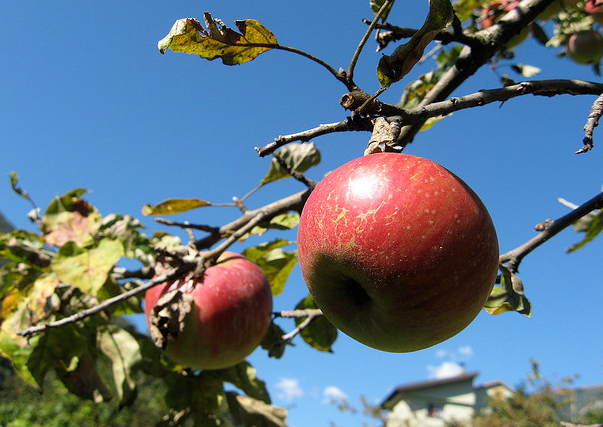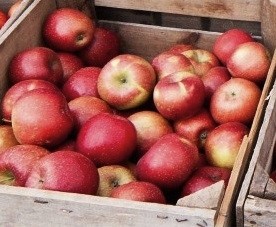The Apple Tree of Life? Adding leaves to juice boosts health potential: Study

As common constituents in the human diet, with fruits and vegetables as the major dietary source, polyphenols are organic chemicals with a range of potential health benefits due to antioxidant and anti-inflammatory properties, with recent animal studies, for instance, showing protective activity with respect of carcinogenesis.
Apples are particularly high in polyphenols, and as Kolniak-Ostek et al. write in this study: “Cloudy apple juice, one of the most common components of fruit intake in Europe, may play an important role in maintaining human health. Phytochemicals of fruit juices have strong antioxidant and anti-proliferative properties.
Harsh processing techniques
But Kolniak-Ostek et al. (from Wroclaw University of Environmental and Life Sciences, Poland) wrote that apple juice processing techniques meant that the loss of 50-90% of healthy polyphenols was unavoidable (Dietrich et al. 2003), before suggesting that adding apple leaves to beverages could make a big difference.
“The addition of apple leaves to the cloudy apple beverages may increase polyphenols’ concentrations as compared to the cloudy apple juice,” the scientists said, adding that they wanted to focus on producing such juices with added leaves to explore this possibility.
The study authors explained that apple tree leaves – those they tested were of the Sampion apple tree variety – were rich in phytochemicals, especially flavonoids (the largest family of polyphenolic compounds) and polyphenols, and were of interest due to their “important biological and pharmacological properties”.
“Until now, the use of leaves from fruit trees have not generally received much attention as the sources of antioxidants and this could have happened due to their lack of popularity and lack of commercial applications,” Kolniak-Ostek et al. said, adding that fruit leaves had nonetheless been used in folk medicine.
Previous research (Wang and Lin, 2000) indicated that strawberry, black- and red raspberry and strawberry plants had higher antioxidant capacities and total phenolic content compared to their fruit tissues, Kolniak-Ostek et al. wrote.
‘Good and cheap’ bioactive source
More specifically, the scientists noted a 2007 paper by Renard et al., indicating that apple fruit leaves could be used as a “good and cheap source of bioactive constituents with potential use in industry”.
In the current study, Kolniak-Ostek et al. found that the total phenolic compound content in fortified juices – between 1665 mg per liter (mg/l) and 2541mg/l – was higher than a control apple juice (440mg/l), with antioxidant capacity positively correlated with polyphenolic compound content.
“This study suggests that the use of apple tree leaves can be a better and cheaper source of bioactive compounds and may have relevance in the prevention of diseases in which free radicals are implicated, Kolniak-Ostek et al. added.
Leaves were rich in phytochemicals – especially flavonoids and phenolic acids, and were of interest for their “important biological and pharmacological properties”, the team wrote.
“The results demonstrated that cloudy apple beverages, produced with addition of 0.5%, 1%, and 5% of apple leaves can be a valuable food products.
“Additionally, leaves had positive effect on the increase of phytochemicals, especially flavan-3-ols [polyphenols] and flavonols, and antioxidant capacity,” Kolniak-Ostek et al. added.
Title: ‘Effect of apple leaves addition on physicochemical properties of cloudy beverages’
Authors: Kolniak-Ostek, J., Oszmianski, J., Wojdylo, A.
Source: Industrial Crops and Products, January 2013, pp.413-420, http://dx.doi.org/10.1016/j.indcrop.2012.12.003






